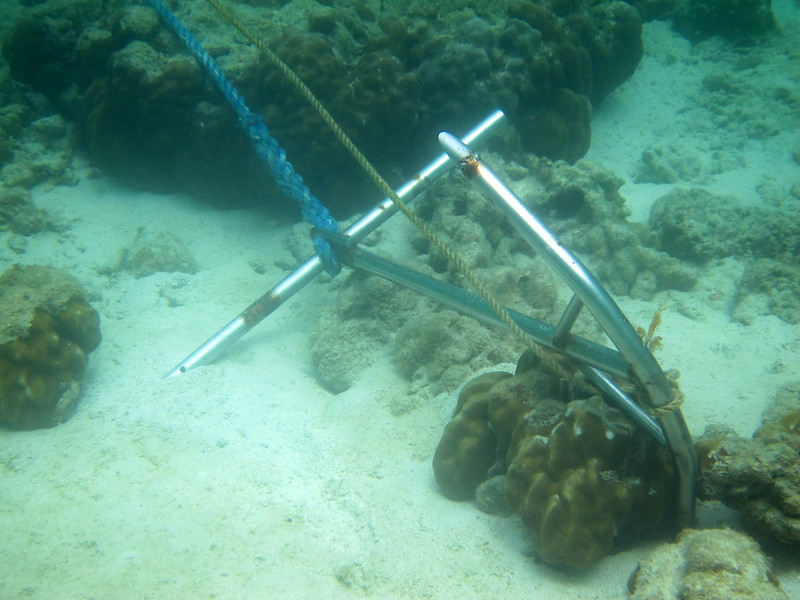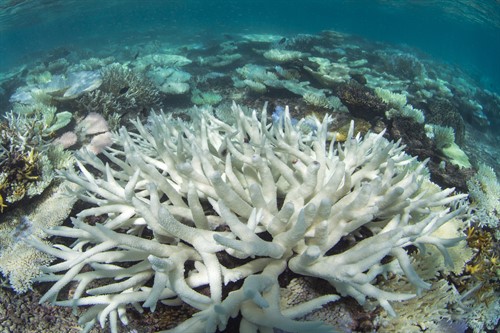Across our planet, our coral reefs face a barrage of threats. From the sweeping impact of climate change to the smaller scale damage caused by localised stressors, like careless diving practices. On top of this, anchoring can cause serious damage to corals and other marine environments like seagrass beds. Even the most careful throw of an anchor can be devastating. In just one instance in Florida in 2019, critically endangered elkhorn corals, that had previously survived Hurricane Irma, were wiped out as a result of a dragged anchor.
Sadly, anchor damage to coral colonies isn’t uncommon. But it can be avoided. Read on to find out more about the impact anchoring has on the marine environment and what you can do to prevent anchor damage.
The problem with anchoring
So here’s the thing: anchors are heavy. Really heavy. And often they have a long, weighty chain attached to them. So when they’re dropped onto a fragile coral reef, it’s no surprise they leave a path of destruction behind them.
Every time an anchor is dropped and comes into contact with living organisms at the bottom of the seabed, it usually results in some kind of physical damage, dislodgement or an increase in sedimentation. If anchoring isn’t done right, this kind of damage can happen at various stages, during the placing, retrieval and while at anchor too.
But it’s not just the anchor itself that poses a hazard to the environment. The cables and chains can cause serious damage too. Even if the anchor is carefully placed, the cable can stay in contact with the reef. If the wind or current causes the boat to change direction, the anchor and chain will drag along the seabed, causing even more harm to our valuable corals.
How does anchoring damage corals?
There are a few factors that can determine just how much damage an anchor can cause to the seabed. For instance, it can depend on how many boats there are in the area, how big the boats are, what the weather conditions are like and the substrate firmness too.
Coral reefs are fragile and, often, slow growing animals. That means that even a small amount of damage can be devastating. Did you know that honeycomb coral takes up to 20 months just to grow 1cm? An anchor can impact an average of 7.11% of the coral at a frequently used site each year. At this rate, it won’t take many years to destroy our favourite dive sites.
There are many types of corals and anchoring affects all of the family groups. The extent of the damage caused by anchoring can vary from partial to complete destruction. And it can take a very long time for reefs to recover from this damage.

Here’s a closer look at the different types of coral and how susceptible they are to anchor damage:
- Soft corals: Soft coral have a flexible, sometimes leathery appearance. They lack a hard skeleton which means they’re highly susceptible to physical damage.
- Branching corals: Branching corals are brittle, due to the branching morphology of its calcium carbonate skeleton. This also makes them highly susceptible to damage.
- Massive corals: With their calcium carbonate skeleton, massive corals have important reef-building qualities. They are somewhat more resistant to physical damage than other types of corals, but can still suffer harm from poor anchoring.
The impact on biodiversity
Coral reefs are characterised by their three-dimensionality. In other words, their unique 3D structure is part of what helps them support other marine life. This means that any ecological damage caused by anchors can considerably shrink the complexity of the marine habitat. In the worst case, the loss of just one coral species could lead to waning numbers of certain fish species. This, in turn, would have a knock-on effect on the food chain, impacting the delicate balance of the marine habitat.
It’s in our interest to protect our coral reefs
Healthy coral reefs allow swathes of marine species to flourish, which benefits humans too. Fewer homes for marine life results in poorer fisheries, not to mention less coastal protection and fewer attractive reefs for tourists to come and visit.

Did you know that more than 450 million people live within 60km of coral reefs? The majority of these people, either directly or indirectly, depend on them, not only for food but as a source of income too. So, it’s really in everyone’s interest to maintain healthy coral reefs to protect future businesses, tourism and livelihoods.
Tourism is also a risk factor. It’s important to minimise the direct pressure tourism puts on coral reefs because healthier reefs are better able to withstand wider global stressors. A coral reef subjected to regular physical damage (for example, from anchoring or diver contact) will be less resilient to the larger scale changes from a warmer, more acidic ocean. This may lead to more intense and frequent bleaching events.
It’s not just coral reefs under threat
But it’s not just coral that’s affected by anchoring. All marine ecosystems are connected. Seagrass beds, for example, provide a nursery and home to many types of fish, molluscs and crustaceans too. They may not always get as much attention as coral reefs but they are some of the most productive ecosystems in the world. It’s been estimated that the world’s seagrass meadows can capture up to 83 million metric tons of carbon each year. Anchoring can devastate this fragile marine ecosystem in just seconds.
Let’s protect our reefs from anchoring damage
We all have a part to play in protecting our precious coral reefs. And although there are far bigger threats out there than running a dive shop, by understanding and reducing the impacts of the threats you can control – such as using alternatives to anchoring – you can play a huge part in saving our reefs by leaving them more resilient to global threats. Not to mention that coral reefs are one of the most valuable ecosystems on the planet. In fact, it’s estimated that the cost of replacing one square metre of coral reefs is US $3,000!
Want to find out more about how you can prevent anchor damage? Keep an eye out for our upcoming blog post which outlines some recommended alternatives to anchoring and help save our coral reefs.


